Experimental Study on Machining Engineering Ceramics by Electrochemical Discharge Compound Grinding
Abstract
1. Introduction
2. Materials and Methods
2.1. Principles
2.2. Experimental Setup
2.3. Experimental Details
3. Results and Discussions
3.1. Effects of Power Pulse Frequency
3.2. Effects of Power Voltage
3.3. Effects of Rotation Speed
3.4. Groove Machining with the Optimal Parameters
4. Conclusions
- Low pulse frequency and large voltage led to a stable gas layer and sufficient discharge energy, which are necessary for material removal in electrochemical discharge compound grinding. With the decrease of frequency or increase of voltage, the groove width increased. However, the surface morphology was damaged when the frequency was too low or the voltage too large. Thus, a frequency of 400–600 Hz and a voltage of 19–21 V are considered to be appropriate.
- High rotation speed led to a small grinding force and little tool wear, which is good for increasing the material removal rate and improving the surface morphology. However, a too-high rotation speed may cause splashing of the electrolyte and an unstable gas layer. Thus, an optimal rotation speed of 600–800 rpm was chosen.
- Using the optimal machining parameters of a 20-V voltage, a 400-Hz frequency and a 600-rpm rotation speed, a micro-groove with a smooth surface and good morphology was fabricated by electrochemical discharge compound grinding, and better processing results could be expected in future studies.
Author Contributions
Funding
Conflicts of Interest
References
- Jang, B.K.; Sakka, Y. Thermophysical properties of porous SiC ceramics fabricated by pressureless sintering. Sci. Technol. Adv. Mater. 2007, 8, 655–659. [Google Scholar] [CrossRef]
- Hundley, J.M.; Eckel, Z.C.; Schueller, E.; Cante, K.; Biesboer, S.M.; Yahata, B.D.; Schaedler, T.A. Geometric characterization of additively manufactured polymer derived ceramics. Addit. Manuf. 2017, 18, 95–102. [Google Scholar] [CrossRef]
- Zaretsky, E.V.; Chiu, Y.P.; Tallian, T.E. Ceramic bearings for use in gas turbine engines. J. Mater. Eng. Perform. 2013, 22, 2830–2846. [Google Scholar]
- Wang, M.C.; Dong, X.; Tao, X.; Liu, M.M.; Liu, J.C.; Du, H.Y.; Guo, A.R. Joining of various engineering ceramics and composites by a modified preceramic polymer for high-temperature application. J. Eur. Ceram. Soc. 2015, 35, 4083–4097. [Google Scholar] [CrossRef]
- Agarwal, S.; Rao, P.V. Grinding characteristics, material removal and damage formation mechanisms in high removal rate grinding of silicon carbide. Int. J. Mach. Tools Manuf. 2010, 50, 1077–1087. [Google Scholar] [CrossRef]
- Tao, Y.; Yuan, S.Q.; Liu, J.R.; Zhang, F. Influence of Cross-Sectional Flow Area of Annular Volute Casing on Transient Characteristics of Ceramic Centrifugal Pump. Chin. J. Mech. Eng. 2019, 32, 4. [Google Scholar] [CrossRef]
- Han, P.; Pang, S.L.; Fan, J.B.; Shen, X.Q.; Pan, T.Z. Highly enhanced piezoelectric properties of PLZT/PVDF composite by tailoring the ceramic Curie temperature, particle size and volume fraction. Sens. Actuators A Phys. 2013, 204, 74–78. [Google Scholar] [CrossRef]
- Pachaury, Y.; Tandon, P. An overview of electric discharge machining of ceramics and ceramic based composites. J. Manuf. Process. 2017, 25, 369–390. [Google Scholar] [CrossRef]
- Chak, S.K.; Rao, P.V. The drilling of Al2O3 using a pulsed DC supply with a rotary abrasive electrode by the electrochemical discharge process. Int. J. Adv. Manuf. Technol. 2008, 39, 633–641. [Google Scholar] [CrossRef]
- Zhang, Z.Y.; Huang, L.; Jiang, Y.J.; Liu, G.; Nie, X.; Lu, H.Q.; Zhuang, H.W. A study to explore the properties of electrochemical discharge effect based on pulse power supply. Int. J. Adv. Manuf. Technol. 2016, 85, 2107–2114. [Google Scholar] [CrossRef]
- Bhattacharyya, B.; Doloi, B.N.; Sorkhel, S.K. Experimental investigations into electrochemical discharge machining (ECDM) of non-conductive ceramic materials. J. Mater. Process. Technol. 1999, 95, 145–154. [Google Scholar] [CrossRef]
- Wan, L.; Dai, P.; Li, L.; Deng, Z.; Hu, Y. Investigation on ultra-precision lapping of A-plane and C-plane sapphires. Ceram. Int. 2019, 45, 12106–12112. [Google Scholar] [CrossRef]
- Deja, M.; List, M.; Lichtschlag, L.D.; Uhlmann, E. Thermal and technological aspects of double face grinding of Al2O3 ceramic materials. Ceram. Int. 2019. [Google Scholar] [CrossRef]
- Yin, L.; Huang, H.; Ramesh, K.; Huang, T. High speed versus conventional grinding in high removal rate machining of alumina and alumina-titania. Int. J. Mach. Tools Manuf. 2005, 45, 897–907. [Google Scholar] [CrossRef]
- Wei, S.L.; Zhao, H.; Jing, J.T.; Liu, Y.F. Investigation on surface micro-crack evaluation of engineering ceramics by rotary ultrasonic grinding machining. Int. J. Adv. Manuf. Technol. 2015, 81, 483–492. [Google Scholar]
- Chen, S.G.; Lin, B.; Han, X.S.; Liang, X.H. Automated inspection of engineering ceramic grinding surface damage based on image recognition. Int. J. Adv. Manuf. Technol. 2013, 66, 431–443. [Google Scholar] [CrossRef]
- Kowsari, K.; Nouraei, H.; Samareh, B.; Papini, M.; Spelt, J.K. CFD-aided Prediction of the Shape of Abrasive Slurry Jet Micro-Machined Channels in Sintered Ceramics. Ceram. Int. 2016, 42, 7030–7042. [Google Scholar] [CrossRef]
- Kowsari, K.; Sookhaklari, M.R.; Nouraei, H.; Papini, M.; Spelt, J.K. Hybrid erosive jet micro-milling of sintered ceramic wafers with and without copper-filled through-holes. J. Mater. Process. Technol. 2016, 230, 198–210. [Google Scholar] [CrossRef]
- Singh, R.P.; Singhal, S. Experimental study on rotary ultrasonic machining of alumina ceramic: Microstructure analysis and multi-response optimization. Proc. Inst. Mech. Eng. Part L J. Mater. Des. Appl. 2018, 232, 967–986. [Google Scholar] [CrossRef]
- Li, Z.C.; Cai, L.W.; Pei, Z.J.; Treadwell, C. Edge-chipping reduction in rotary ultrasonic machining of ceramics: Finite element analysis and experimental verification. Int. J. Mach. Tools Manuf. 2006, 46, 1469–1477. [Google Scholar] [CrossRef]
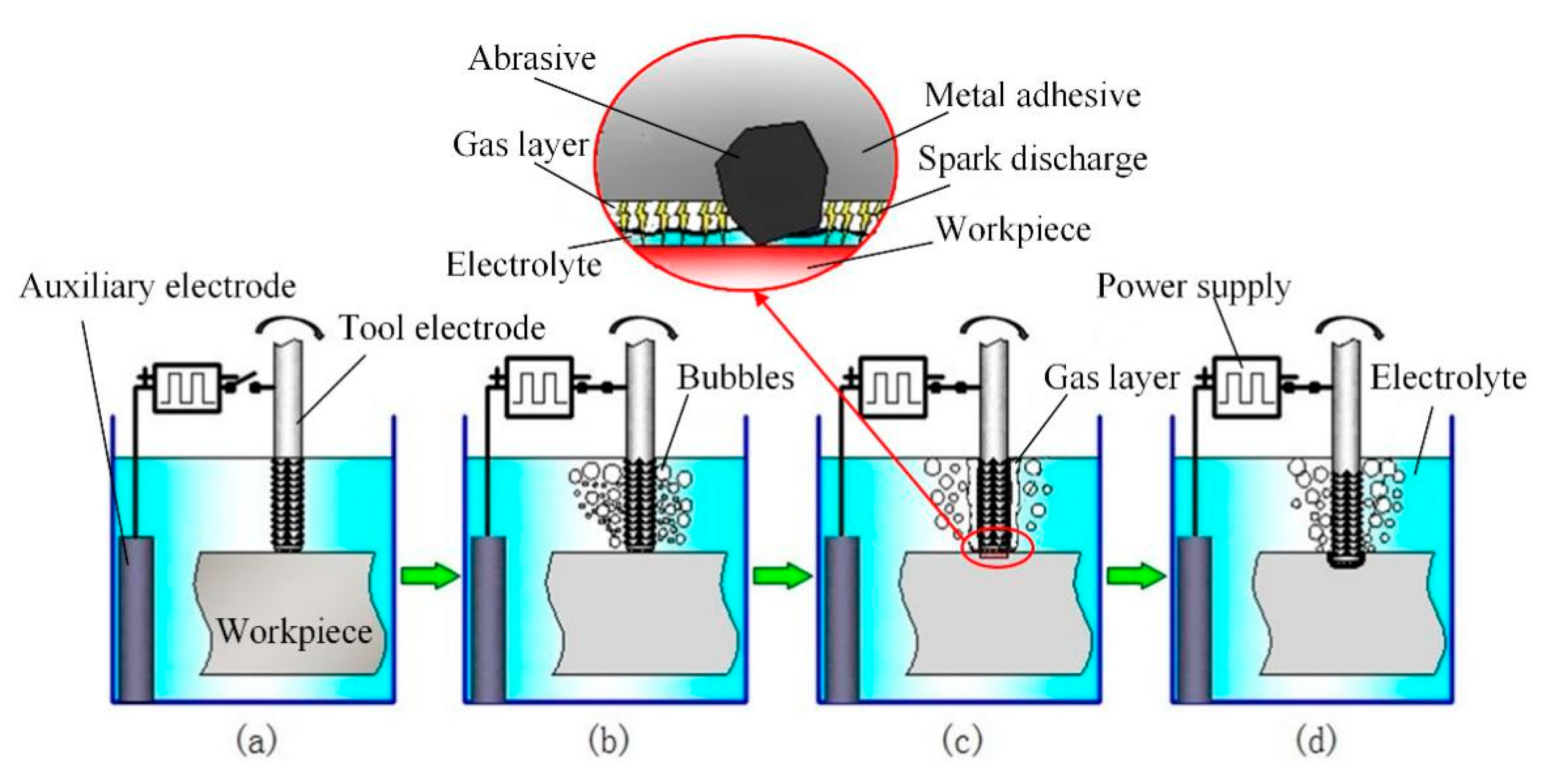

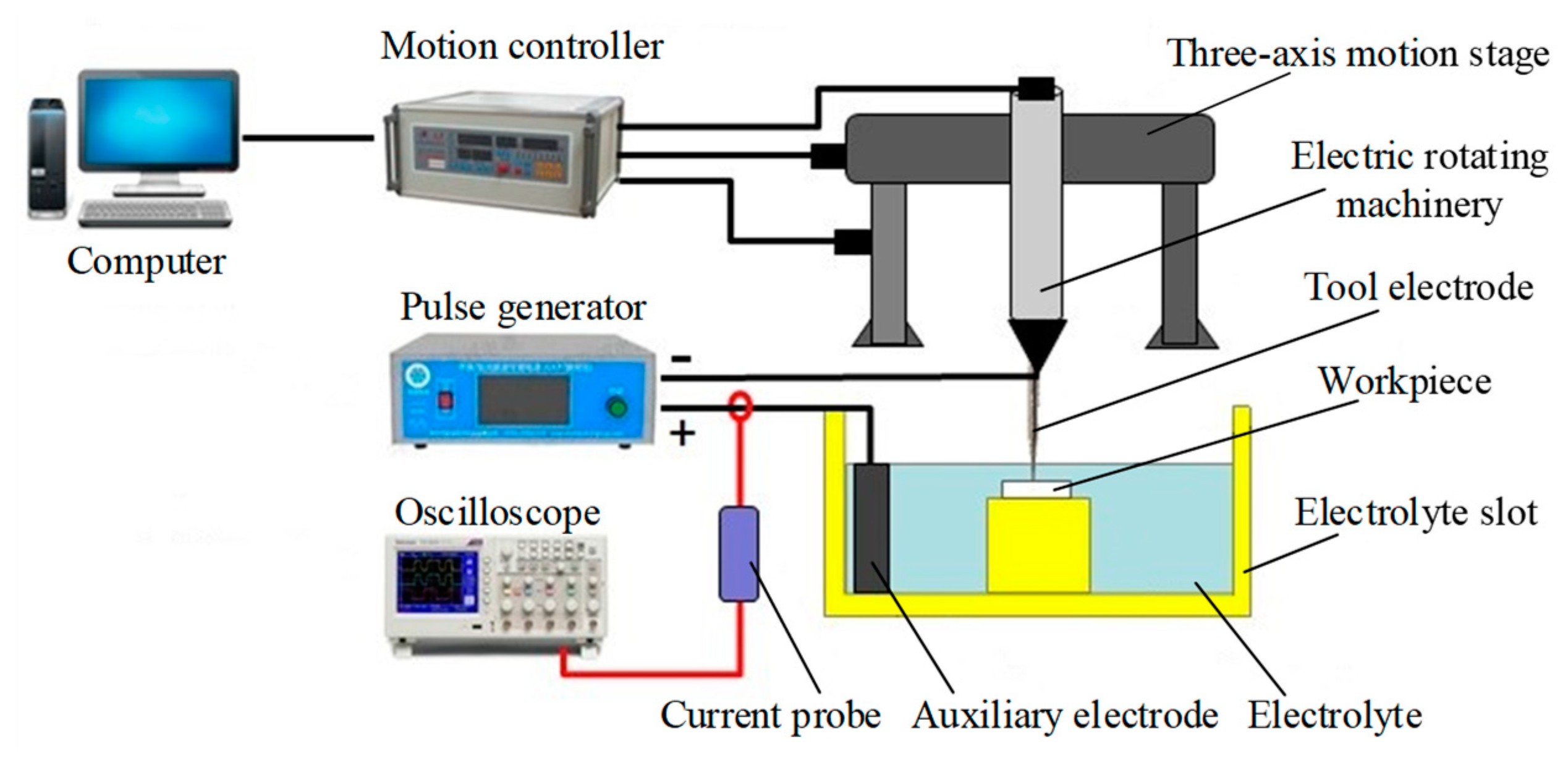
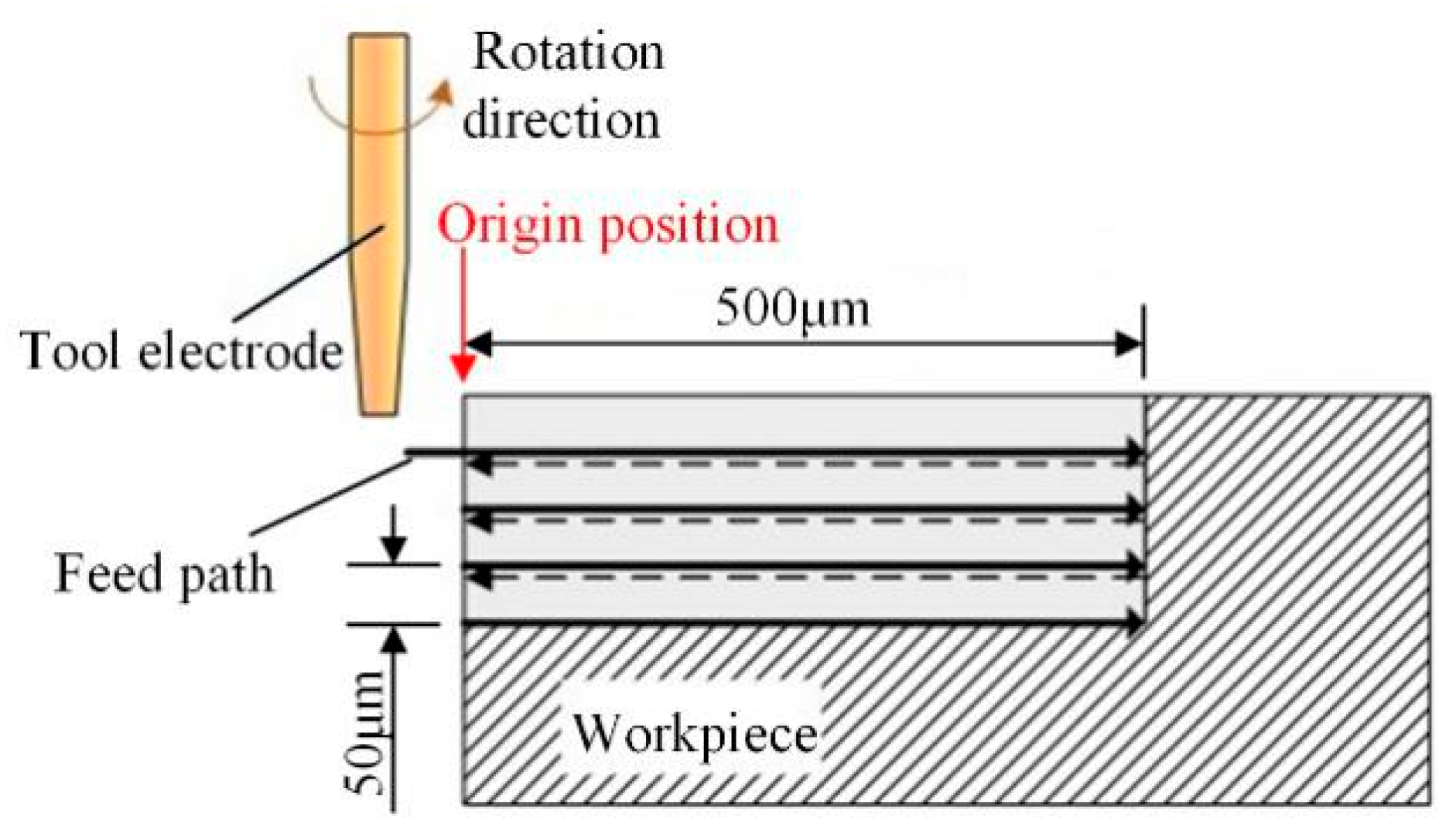
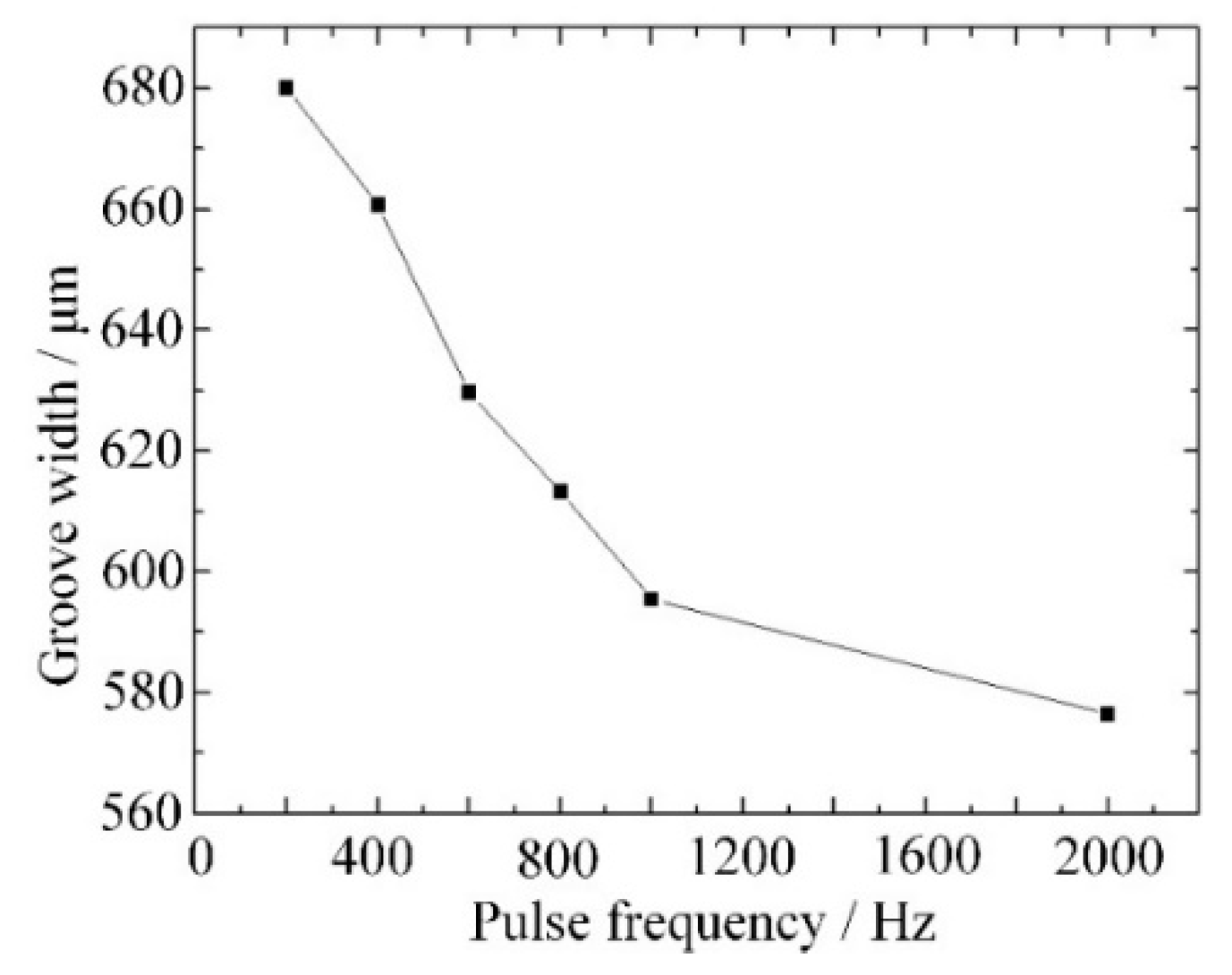
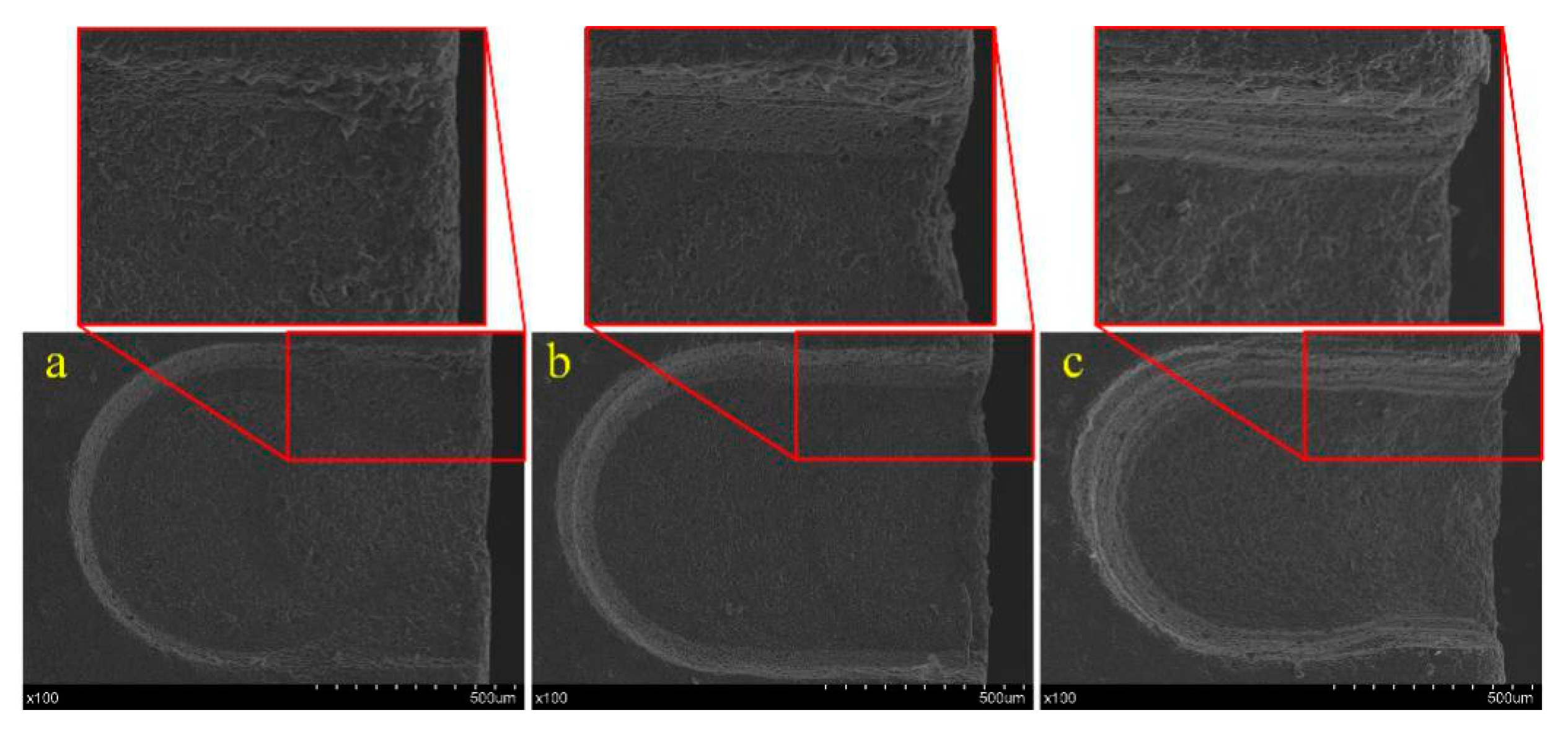
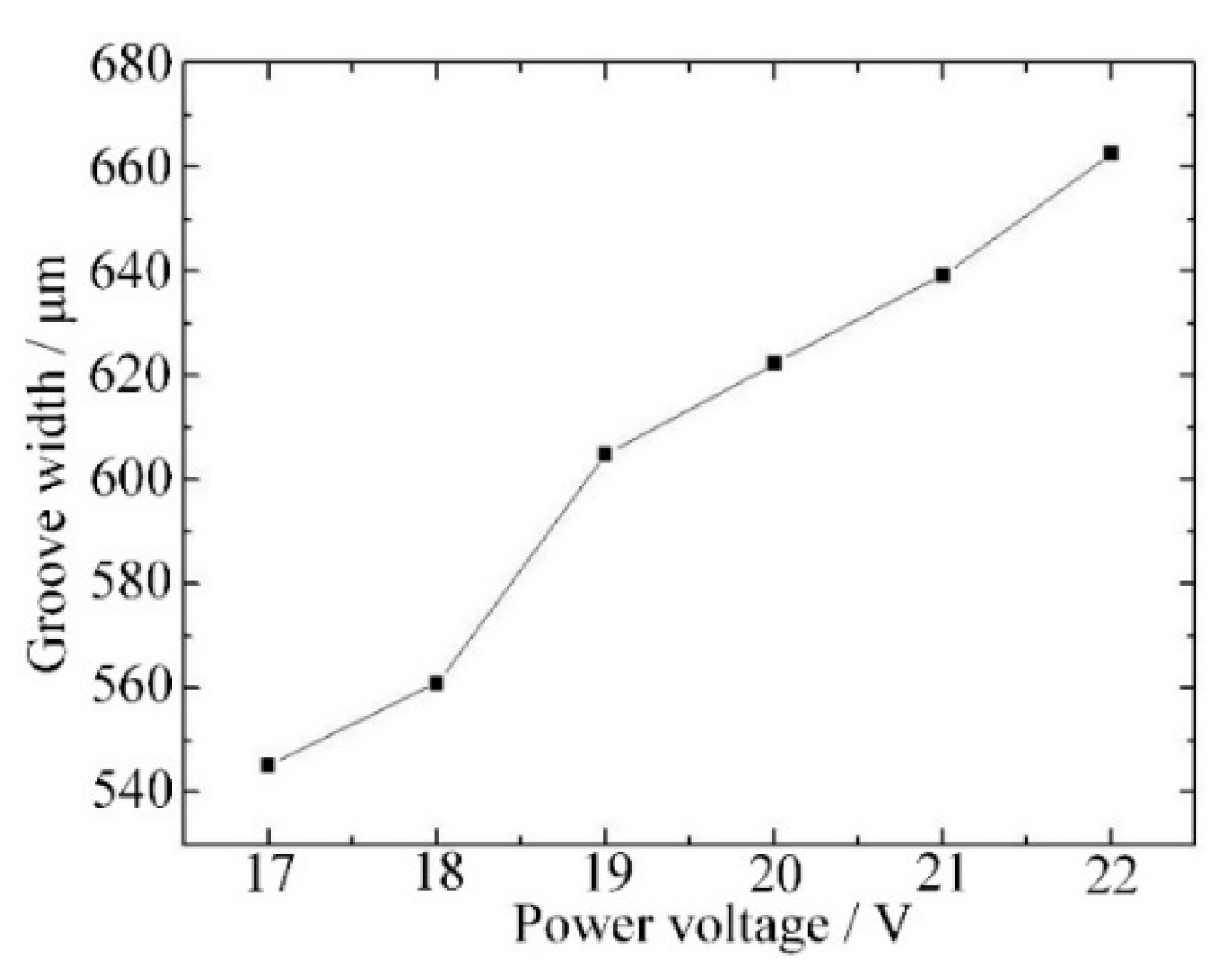
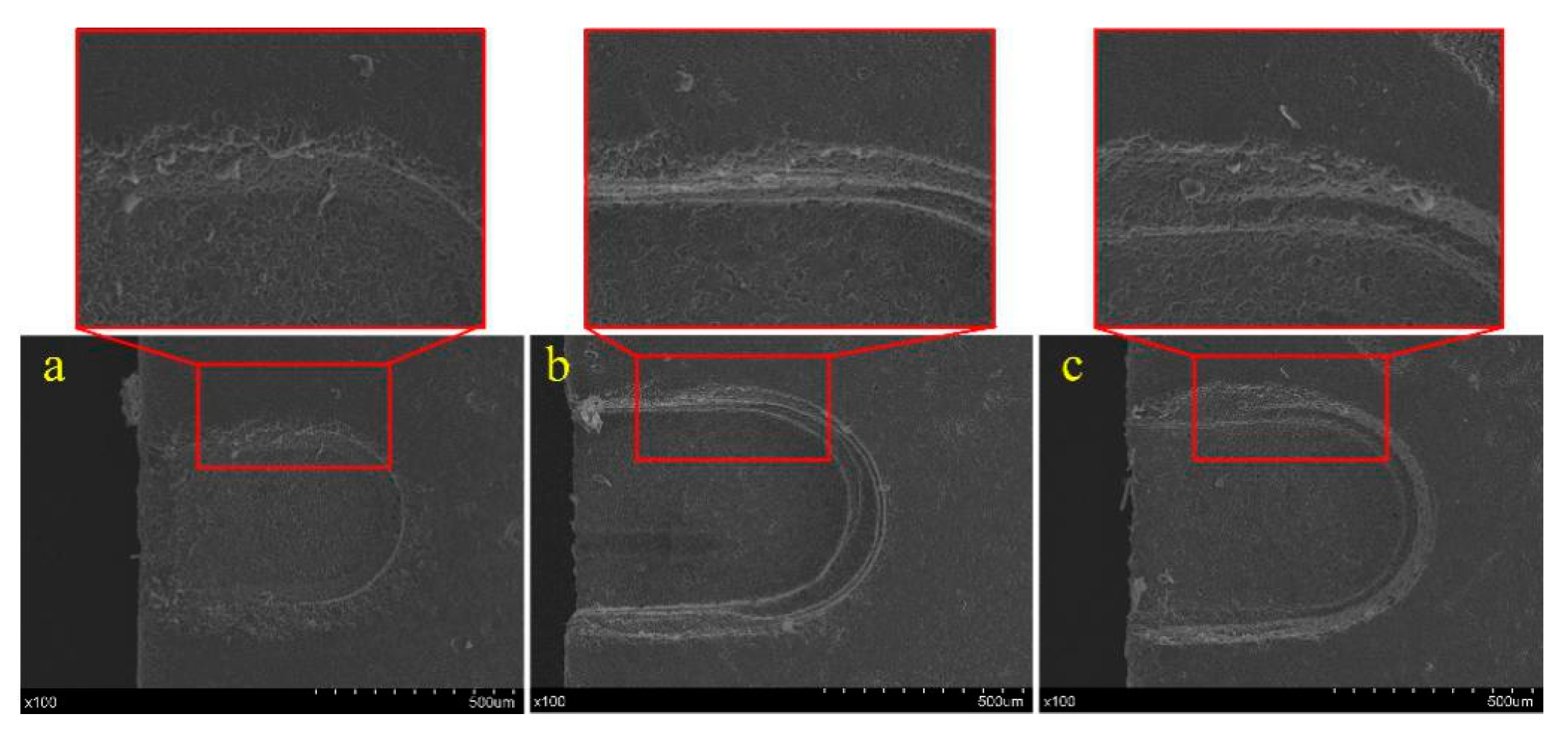

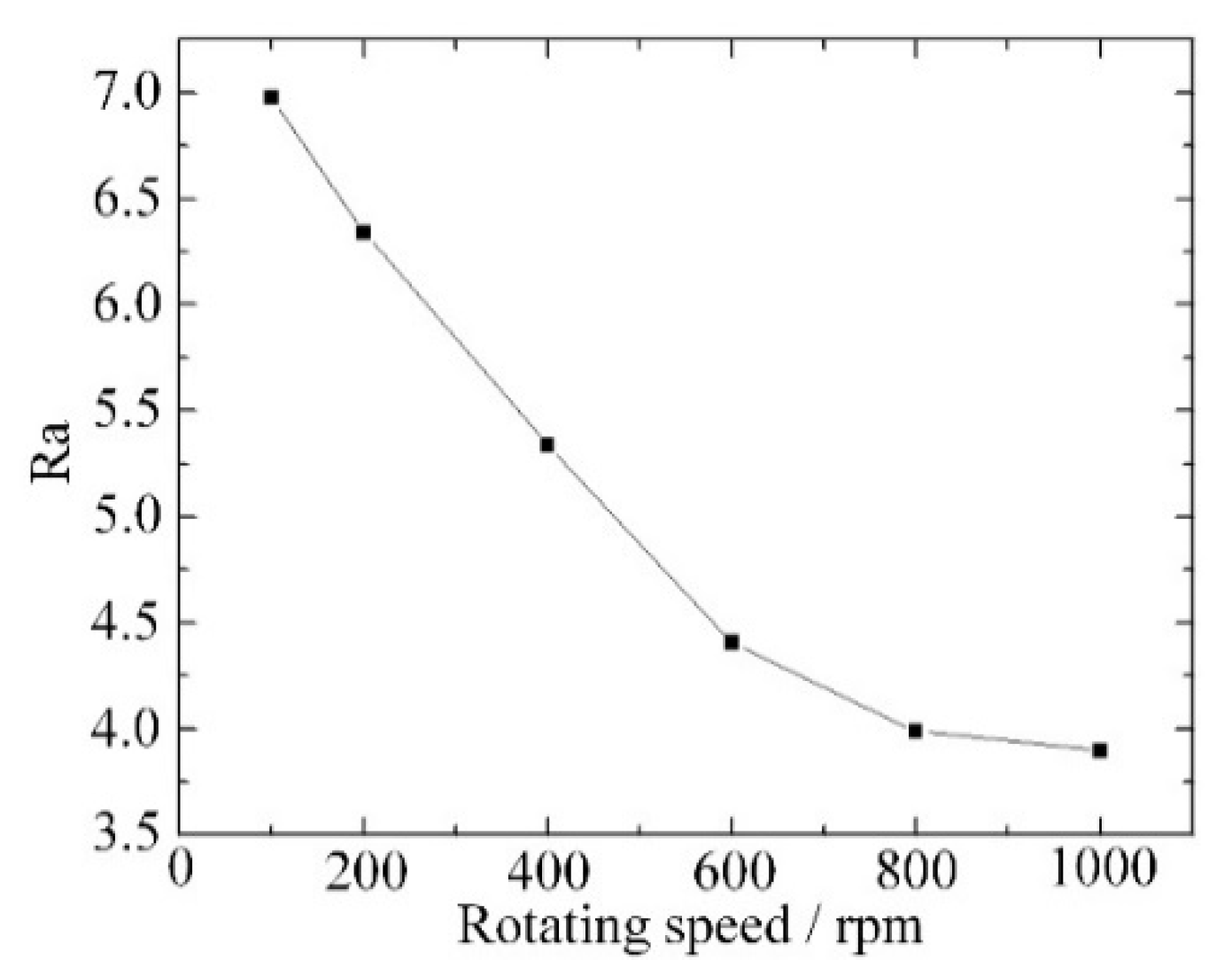

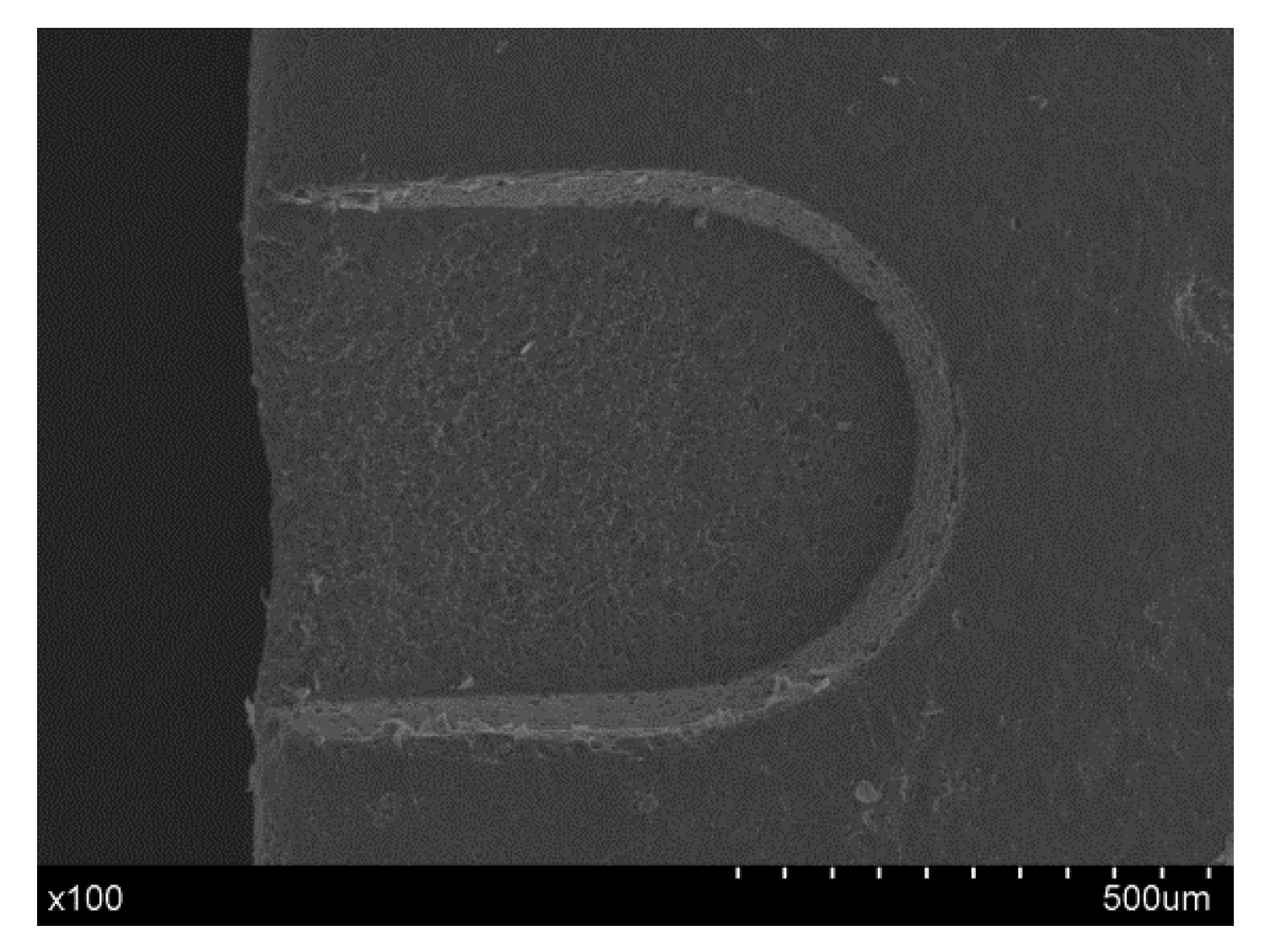
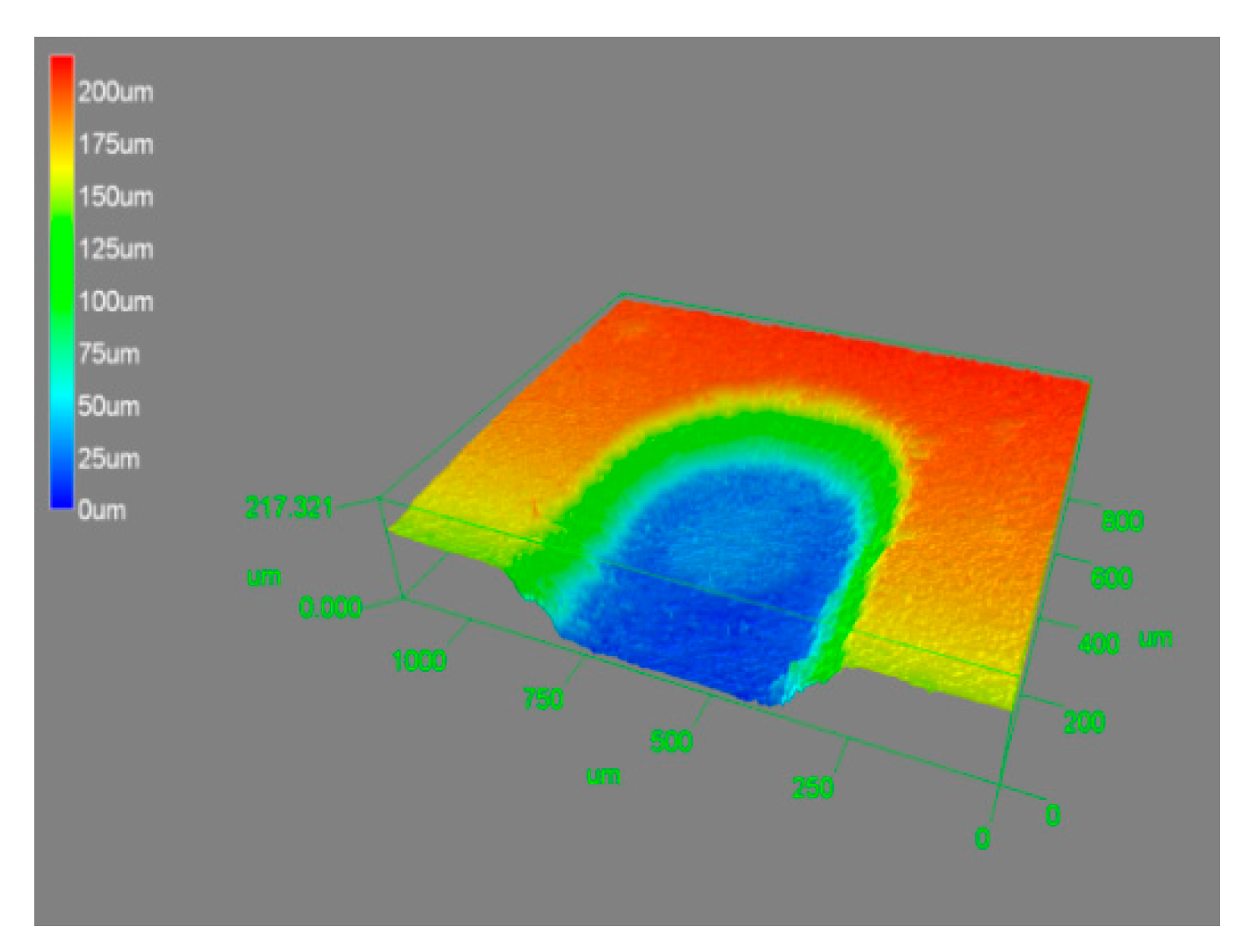
© 2019 by the authors. Licensee MDPI, Basel, Switzerland. This article is an open access article distributed under the terms and conditions of the Creative Commons Attribution (CC BY) license (http://creativecommons.org/licenses/by/4.0/).
Share and Cite
Xu, K.; Zhang, Z.; Yang, J.; Zhu, H.; Fang, X. Experimental Study on Machining Engineering Ceramics by Electrochemical Discharge Compound Grinding. Materials 2019, 12, 2514. https://doi.org/10.3390/ma12162514
Xu K, Zhang Z, Yang J, Zhu H, Fang X. Experimental Study on Machining Engineering Ceramics by Electrochemical Discharge Compound Grinding. Materials. 2019; 12(16):2514. https://doi.org/10.3390/ma12162514
Chicago/Turabian StyleXu, Kun, Zhaoyang Zhang, Jingbo Yang, Hao Zhu, and Xiaolong Fang. 2019. "Experimental Study on Machining Engineering Ceramics by Electrochemical Discharge Compound Grinding" Materials 12, no. 16: 2514. https://doi.org/10.3390/ma12162514
APA StyleXu, K., Zhang, Z., Yang, J., Zhu, H., & Fang, X. (2019). Experimental Study on Machining Engineering Ceramics by Electrochemical Discharge Compound Grinding. Materials, 12(16), 2514. https://doi.org/10.3390/ma12162514



